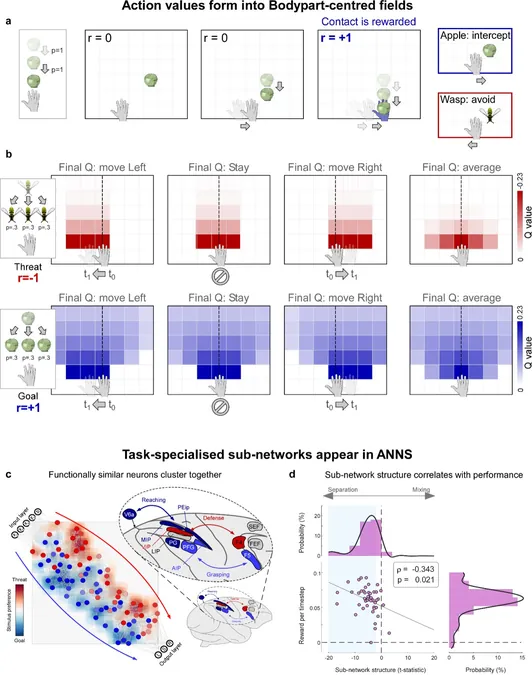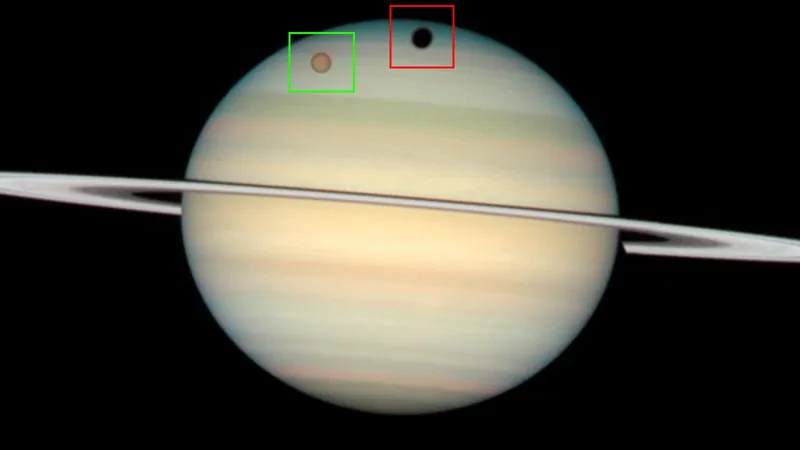
Unlocking the Mind: How Neural Networks Illuminate Our Peripersonal Space
2025-06-18
Author: Ming
Exploring the Mysteries of Peripersonal Space
The human brain is a marvel of complexity, capable of performing intricate tasks including mapping the space around us—known as peripersonal space. This crucial area is where we interact with our environment, and understanding it has been a goal for scientists for years.
Radical Discoveries in Neural Functioning
A groundbreaking study from researchers at the Chinese Academy of Sciences and the Italian Institute of Technology has tapped into brain-inspired computational models to decode how our brain represents this immediate space. Their findings, featured in *Nature Neuroscience*, reveal that various receptive fields around the body collaborate to form a cohesive model of our surroundings.
Curiosity Sparks Innovation
As Giandomenico Iannetti, the study's senior author, remarks, the research started as an exploratory venture: "Our journey began serendipitously during unfunded experiments out of sheer curiosity." Through their unexpected findings regarding the hand-blink reflex, they identified intriguing patterns in how peripersonal neurons interact based on various stimuli.
A New Framework for Understanding Neurons
Rather than merely expanding on existing data, Iannetti and his team focused on developing a novel quantitative framework to clarify the mechanisms behind peripersonal neurons. They employed artificial neural networks (ANNs), designed to mimic brain connections and learn through reinforcement.
Simulating Animal Behavior for Insights
The research involved creating digital simulations of simplified 'animals' that learned through trial and error. According to co-author Rory John Bufacchi, the pivotal revelation was that peripersonal neuron responses could be tied to the perceived value of potential actions, guiding whether to approach or avoid nearby objects.
Introducing the Egocentric Value Map
The team introduced the concept of the 'egocentric value map,' a theoretical model formed by peripersonal neurons that predicts outcomes based on our immediate environment. This model not only resonated with numerous neuroscience studies but also aligned with existing theories, making strides towards a more unified understanding of body-centered responses.
Promising Comparisons with Real-World Biology
After formulating their egocentric map, the researchers correlated their findings with neurological data from macaques and human fMRI scans. Their simulations showed that the artificial neurons developed receptive fields resembling those of biological peripersonal neurons, mirroring real-life observations.
Applications Beyond Human Understanding
This innovative research into peripersonal neurons holds significant implications beyond theoretical neuroscience. Iannetti highlights potential applications in neuroprosthetics and human-robot interactions. Imagine robots that intelligently adapt to human proximity, enhancing collaborative efforts in various settings.
Continued Exploration on the Horizon
Looking ahead, Iannetti and his team aim to refine and validate their newly introduced framework. Plans are underway to tackle current model limitations by investigating sensory uncertainties, a crucial factor in realistic cognitive modeling.
A Leap Forward in Neuroscience and AI
As they continue to push the boundaries of our understanding of peripersonal neurons, these researchers are paving the way for advancements not just in neuroscience but also in embodied AI, promising a future where technology can perceive and interact with environments as intuitively as we do.






 Brasil (PT)
Brasil (PT)
 Canada (EN)
Canada (EN)
 Chile (ES)
Chile (ES)
 Česko (CS)
Česko (CS)
 대한민국 (KO)
대한민국 (KO)
 España (ES)
España (ES)
 France (FR)
France (FR)
 Hong Kong (EN)
Hong Kong (EN)
 Italia (IT)
Italia (IT)
 日本 (JA)
日本 (JA)
 Magyarország (HU)
Magyarország (HU)
 Norge (NO)
Norge (NO)
 Polska (PL)
Polska (PL)
 Schweiz (DE)
Schweiz (DE)
 Singapore (EN)
Singapore (EN)
 Sverige (SV)
Sverige (SV)
 Suomi (FI)
Suomi (FI)
 Türkiye (TR)
Türkiye (TR)
 الإمارات العربية المتحدة (AR)
الإمارات العربية المتحدة (AR)